
WASHINGTON COUNTY HISTORICAL SOCIETY (Washington County, Utah)
JACOB HAMBLIN HOME
Santa Clara, Utah
LOCATION
3325 Hamblin Dr (on Old Highway 91 on the west side of town)Santa Clara, Utah 84765
(435)677-6230
https://www.churchofjesuschrist.org/learn/locations/hamblin-home
https://www.facebook.com/JacobHamblinHome
37° 8' 1.43" North Latitude, 113° 34' 41.16" West Longitude
37.1337° North Latitude, 113.6614° West Longitude
2,787 feet (849 meters) MSL
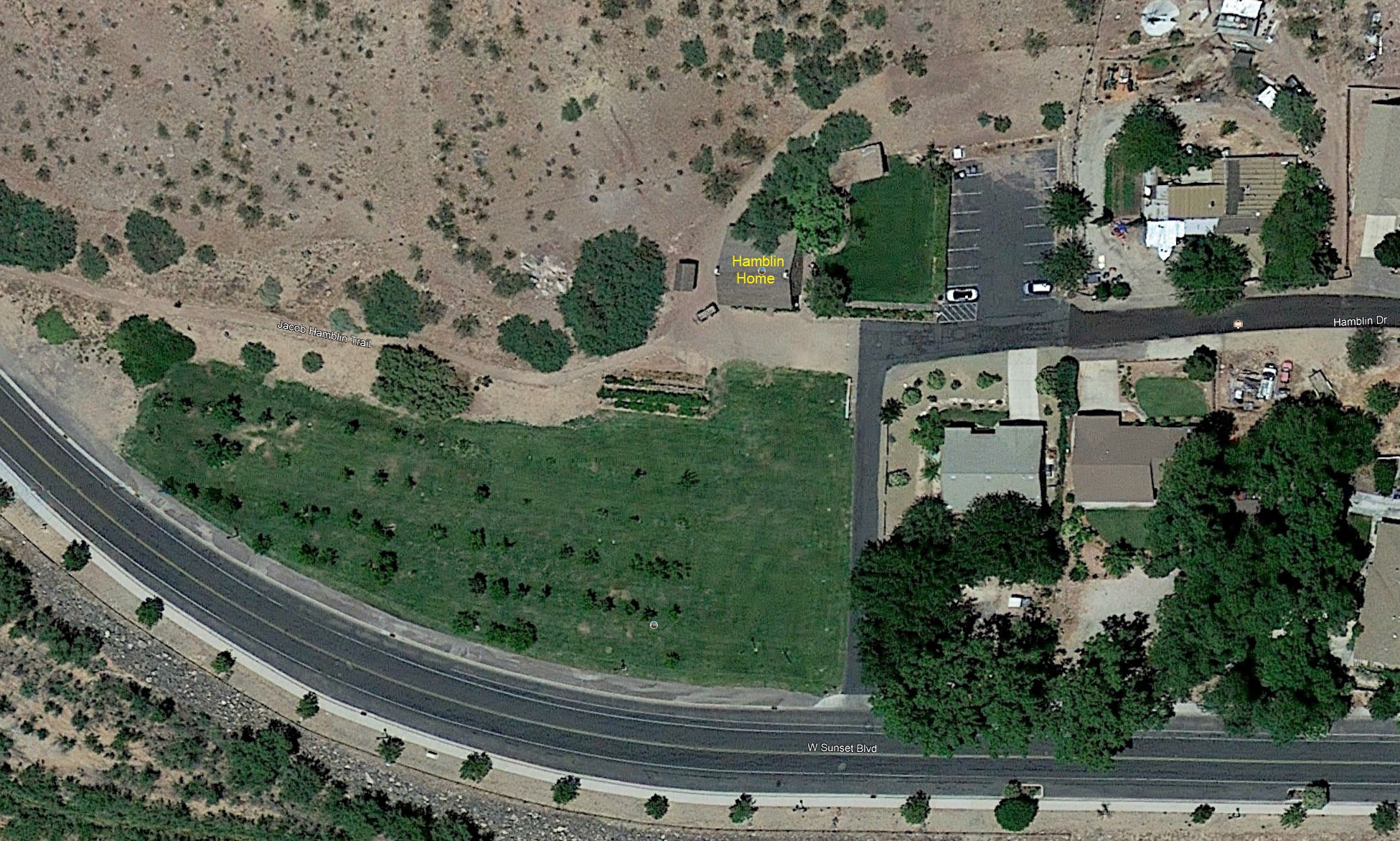
DESCRIPTION
The Jacob Hamblin home was built of sandrock quarried from the red hills behind the home. In 1863 stone masons, including Elias Morris and the Averett Brothers, were called by the Mormon Church to build a home for the Buckskin Apostle to the Lamanites (Indians), The builders left "Irontown" near Cedar City, crossed the mountains to Santa Clara. In a short time a twostory home was constructed, built into the hillside so that the second story could be entered from the outside at ground level.The home has a regular gabled roof with shed extension in the rear, and two porches running the full length of the house. The upper porch floor slopes so that fruits could be dried on it. The main entrance is on the south, opening into a hallway that leads to the rear of the home into the kitchen and storage areas.
Because Jacob had two wives at the time the home was built, the room to the right (east) and the room to the left (west) are nearly identical with beds, fireplaces on the outside walls, and small stairs ascending to the second floor from the back outside corner of each room.
On the second floor is a large room, used for religious, civic and social events. People could enter it directly from the outside without going into the main private quarters. Behind the main room^in the lower shed portion of the back room^were two small, short-cei1inged sleeping rooms used by the smaller children.
Hamblin's two wives, Rachel Judd and Pricilla Leavitt, apparently dearly loved each other. Together they had five and three children respectively and cared for some of Jacob's older children by his first wife. Later Jacob married a young Indian girl as a fourth wife, and finally Louisa Bonelli, as a fifth. It seems probable the house may have been home to as many as ten to fifteen children and three or four wives. His second wife, Rachel, died in the home in 186^. However, Louisa preferred to live by herself and other arrangements were provided.
With his call to Kanab, Utah, in 1871, Jacob Hamblin moved his family from the home to the new location.
Under the auspices of Utah State Parks and Recreation Division, with cooperation and financial assistance from the Mormon Church, the home has been carefully renovated and restored. Very few of Hamblin's furnishings have been located, yet period furniture typical of the region has been obtained. The site is open to visitors and conveys the story of this pioneer 1 life and impact in southern Utah's history.
HISTORY
Jacob Hamblin arrived in Santa Clara, Utah as early as 185^ with several other young Indian missionaries. Their task was to convert the Lamani tes to the Mormon Church, if possible, and develop peaceful relationships with them in any case.By 1856 the missionaries brought their wives to Fort Clara where a meager livelihood was obtained by hard work and irrigation. In 1857 Jacob was appointed president of all the Southern Indian Missions by Brigham Young His duties increased greatly with the unrest associated with the Mountain Meadows Massacre in September 1857. Hamblin and Thales Haskel 1 both were in the north courting and marrying young wives, The foursome returned to Santa Clara via Mountain Meadows, one of the first groups to witness the carnage. Hamblin aided in the recovery and return of the surviving children.
The Buckskin Apostle had a difficult time pacifying the Indians toward the Mormons, while seeking their alliance against Johnston's Army during the Mormon War of 1857-1858. Jacob Hamblin was trusted by the Indians. He believed in absolute honesty when dealing with them, in showing no fear under any condition, but he also demanded justice from them as well.
Life at Fort Clara continued difficult. Tragedy came often. In the fall of 1861 Swiss colonists arrived at the new settlements, but barely in time to witness a large flood in the Clara River wipe out the whole settlement early in 1862. As Hamblin was constantly away exploring or negotiating with the Indians, he was unable to provide for his families. Consequently, in 1863 missionaries were called to build Hamblin a home. His two wives moved in as soon as it was finished.
Jacob Hamblin made several exploring trips across the Colorado between 1858-1863, being the first person to circumnavigate the region of the Grand Canyon. He also explored a wagon route to the Colorado River near Callville (Las Vegas area) in 1864. In conjunction with Henry W. Miller and Jesse W. Crosby, Hamblin took a boat to the Colorado River at the mouth of Grand Wash in 1867, and they were the first white men known to have navigated the river from that point to the Virgin Rivers confluence about 75 miles down stream. Hamblin also assisted John Wesley Powell in his surveys of the Colorado River area. Together they helped negotiate a peace treaty with Navajo at Fort Defiance.
When Hamblin moved to Kanab, the home was leased to a Mr. Bauman who used the home to produce wine. Later his daughter married into the Samuel Knight family, which retained control of it until Clara Hamblin Harmon, a granddaughter of Jacob, purchased it. The home was very de lapidated when the State Parks and Recreation Division took custody of it in 1959.
It is fitting that Jacob Hamblin's church-built home should be preserved as a monument to this southwestern pioneer. Because he was also a polygamist the Buckskin Apostle, when he died August 31, 1886, was a fugitive from justice. His last years were spent in southern Utah, Arizona, New Mexico and Old Mexico.
Put on the National Register of Historic Places (#1971000860) on March 11, 1971.
Commentary by Mary Phoenix:
The pioneer home of Jacob Hamblin is often referred to as the most authentic pioneer structure in the state as well as all of the West.
When Jacob Hamblin was a young man he had a very spiritual experience. He believed he was told that he was to work with the Indians for their betterment and for peace between the tribes and the whites. He was told that as long as he did not shed one drop of Indian blood he could not be harmed. In 1854, soon after the experience, Brigham Young called him to a lifelong mission to the Lamanites (the Mormon name for Indians). He felt that his experience was indeed divinely inspired. That he was successful can be attested to by the number of treaties he was able to bring about in Arizona and New Mexico as well as Utah.
In 1854 he was called to help settle Santa Clara and lived in the Fort until the flood of 1861 washed everything away and then he started to build the rock house on the hill which has endured to the present time. The building was mostly constructed from material found on the hillside back of the house. The lumber was secured from a sawmill in Pine Valley. When it was finished in 1862 it was the largest house in southern Utah. The house originally had two rooms on the ground floor. They were furnished with a fireplace, a bed, a table, and a settee. Upstairs there was one large room and a wide porch. It was called the weaving room for the Hamblin women excelled in this art. It was also used for many other purposes such as dances and school. A cool storage room was dug into the hill to provide storage for the provisions they brought from their ranch in the higher regions.
The family tells a story of how the room off from the upstairs was built. Originally the upstairs was divided by a curtain at nightfall. One side was for the girls and one was for the boys. One time the girls prepared a petition for their homecoming father stating they were too old to have their brothers just through the curtains. The amused Jacob set the boys to building it the next morning.
Although Hamblin married four times and sired twenty four, no more than two wives and twelve children occupied the home at one time. Family legend has it that when church authorities suggested Hamblin also take an Indian wife, his reply was, "When one of you gentlemen do, I will."
He was called to Kanab in 1869 and the house passed into the family of Samuel Knight who lived in it until recent years.
BIOGRAPHY
See the Jacob Hamblin page in the People section.PHOTOS
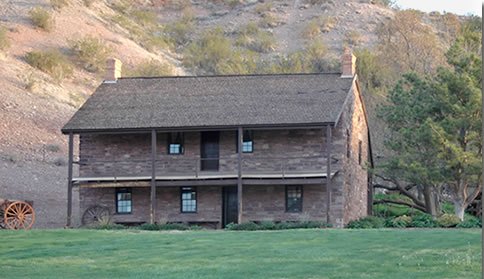
|
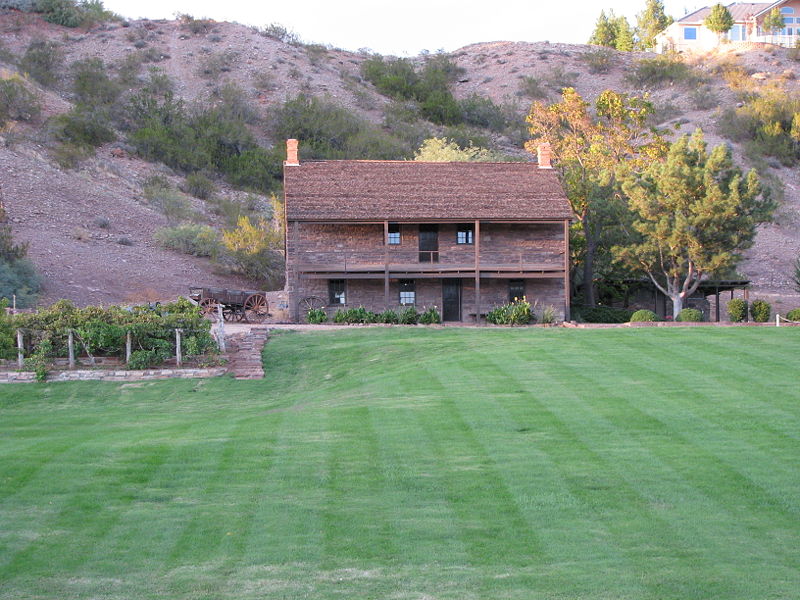
|
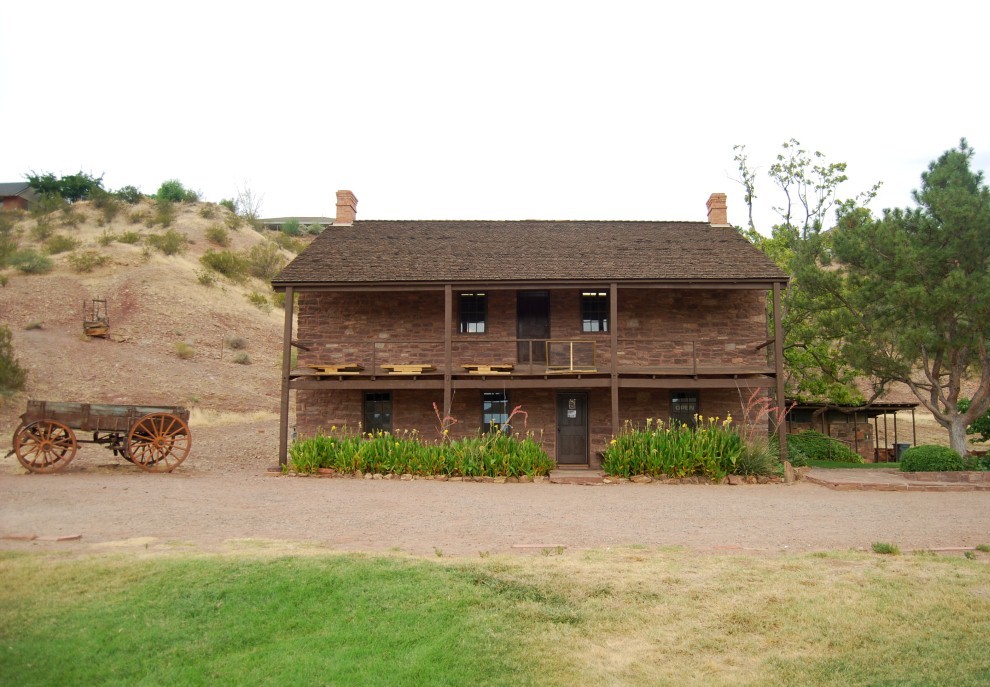 WCHS-01180 Front of the Jacob Hamblin home |
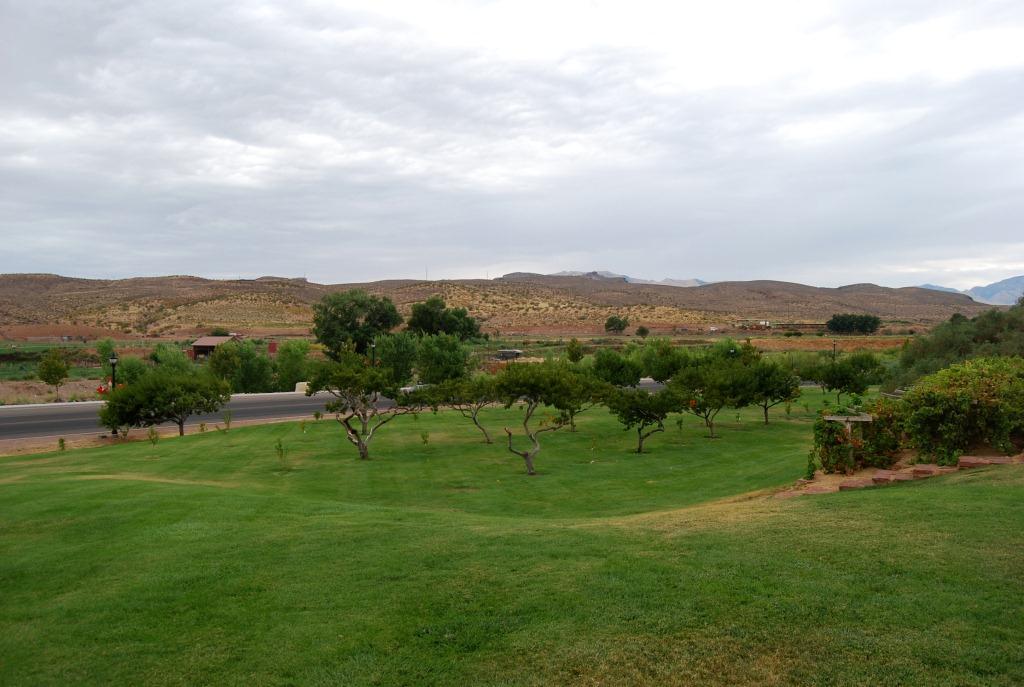 WCHS-01181 Orchard in front of the Jacob Hamblin home |
Other WCHS photos:
WCHS-00550 Jon Bowcutt sketch of the Jacob Hamblin Home
WCHS-00709 8th annual Pioneer Courthouse Invitational Art Exhibit poster
WCHS-03609 Watercolor painting of the Jacob Hamblin Home
Other photos on the web:
Old photo of the Jacob Hamblin home
Old photo of the Jacob Hamblin home
Photo of the Jacob Hamblin home
Photo of the Jacob Hamblin home
Photo of the Jacob Hamblin home
Photo of the Jacob Hamblin home
Photo of the main upstairs room in the Jacob Hamblin home.jpg
Photo of a bedroom in the Jacob Hamblin home
Photos from the National Register of Historic Places nomination form
REFERENCES
Description of the Jacob Hambln home with photosHistory of the Jacob Hamblin home
History and information about the Jacob Hamblin home
National Register of Historic Places, Inventory - Nomination Form
Historical Buildings of Washington County (Volume 1), pp. 22-23.